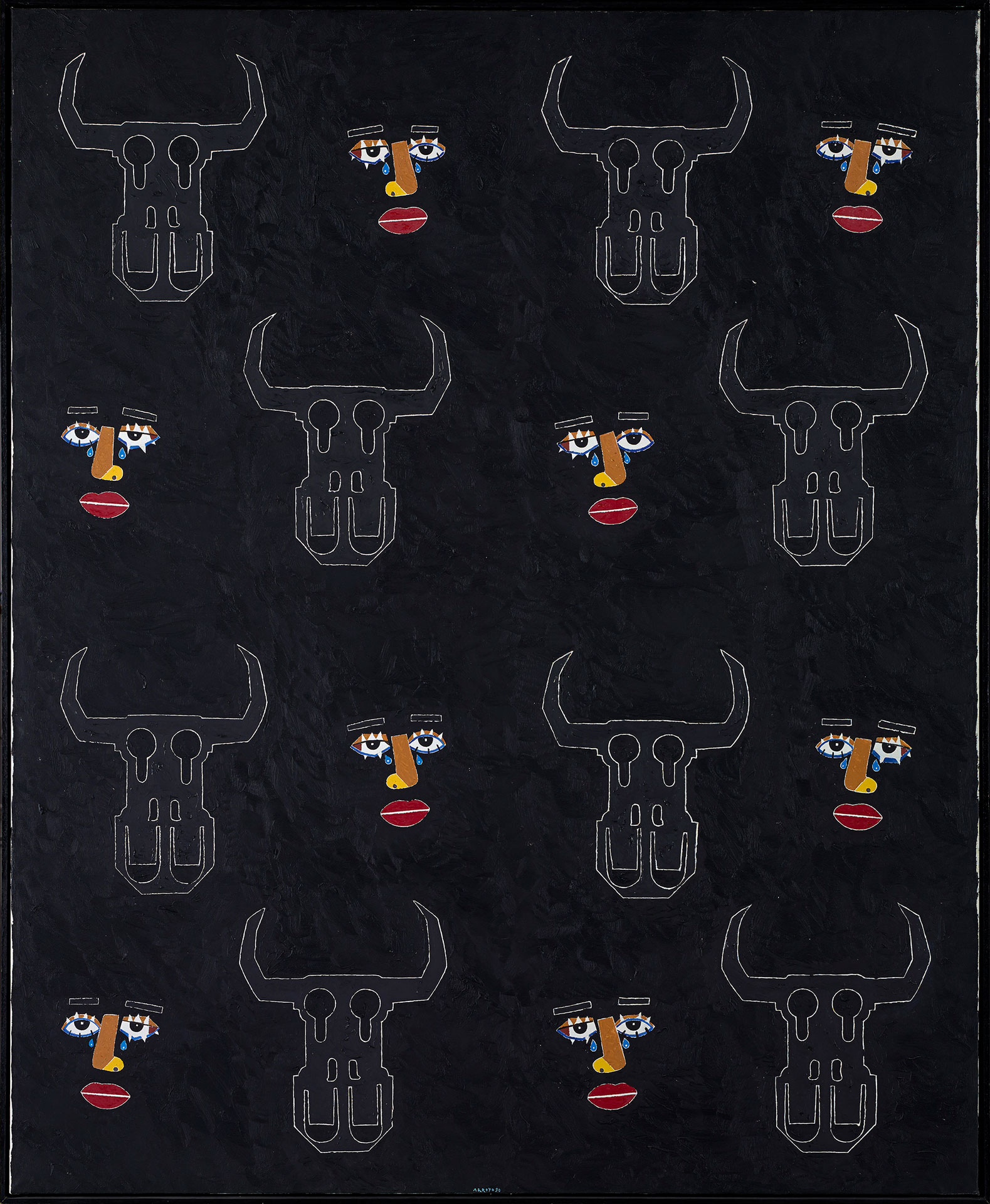
Eduardo Arroyo (Madrid, 1937)
Homage by E.A. to C.P.
1990
WORK INFORMATION
Oil on canvas, 220 x 180 cm
OTHER INFORMATION
Signed and dated at the bottom centre: "ARROYO 90" Inscription on the reverse: "Homenaje de E.A. a C.P. / Arroyo 1990"
Born in Madrid during the Spanish Civil War, Eduardo Arroyo studied journalism with the intention of becoming a writer, although he had drawn obsessively since childhood. In 1958 he decided to flee the culturally stifling repression of Francoist Spain and moved to Paris to pursue his writing career, although he soon realised that painting was his true calling. With no formal education in the fine arts, and embracing a critical, ironic form of figuration, Arroyo began to paint in the context of so-called "narrative figuration" with elements borrowed from Pop language. In 1960 he participated in three group shows of young painters in Paris. Galerie Claude Lévin hosted his first solo exhibition in 1961, and in 1963 he presented his work in Madrid at Sala Biosca, although the show was closed amid great scandal due to the critical message of his works. He would not have another one-man show in Spain until after Franco's death, but he did exhibit with increasing frequency in France, Italy and many other countries. Arroyo's ambivalent relationship with the land of his birth and his opposition to Franco, evident in both his attitudes and artworks, led to his arrest and expulsion from Spain during a short visit in 1973. After Franco's death he finally obtained a Spanish passport, but as he felt practically ignored in his own country he did not return until 1982, when he was awarded the National Visual Arts Prize. He currently divides his time between Paris and Madrid, where he continues to paint, write and participate in various illustration and stage design projects.
His anti-Franco paintings, or those in which reflection on exile inspired some of his best thematic series, have coexisted with works that explore other matters. A popular "vein" surfaces and resurfaces in his oeuvre, accompanying themes that tell short stories of repression, painters, intellectuals, exiles... They are contrasts between modernity and tradition, the anecdotal and the novelistic, irony and play with aspects of Surrealist and Pop language. Arroyo's work has always been a literary painting that tells stories through a constantly varying figurative treatment—at times more synthetic, at others verging on film noir, but always using images as icons steeped in his mordant, sarcastic vision of the world. At times his art has shown hostility towards consecrated avant-garde legends, as in his series Miró rehecho [Miró Remade] or the painting made in collaboration with Aillaud and Recalcati that tells the story of Duchamp's "kidnapping" and "death".
In Homenaje de E.A. a C.P. [Homage from E.A. to C.P.] his gaze becomes ironic and iconic, schematic and repetitive, and even serious with the inky darkness against which the figures are silhouetted. Here he chose to address some of the stereotypes of Spanish culture, also present in his earliest paintings, where we find bullfighters, flamenco dancers, bottles of Tío Pepe sherry and other clichés. In this work we see the teary-eyed face of the singer to whom the painter is paying tribute, Concha Piquer; her simple, contour-less, mask-like portrait is repeated over and over again, varying only in its left or right-facing orientation, with thick red lips and the melancholy expression of a true copla singer. Beside this idiosyncratic image float the pure white contours of rhythmic, schematic bull's heads that almost resemble impassive machines, similar to the drawings of skulls in the half-Baroque, half-modern vanitates he produced around the same time. Both images share the same dense, hermetic black ground that recalls Arroyo's words in one of his latest books: "Hopeless black in the deepest corner of a tunnel. I know that black. I have experienced it, although I have not often painted it. The black of a black cassock, the black of a former Francoist fighter's combat boots, the shiny black of a black three-cornered guard's hat." [Carmen Bernárdez]

